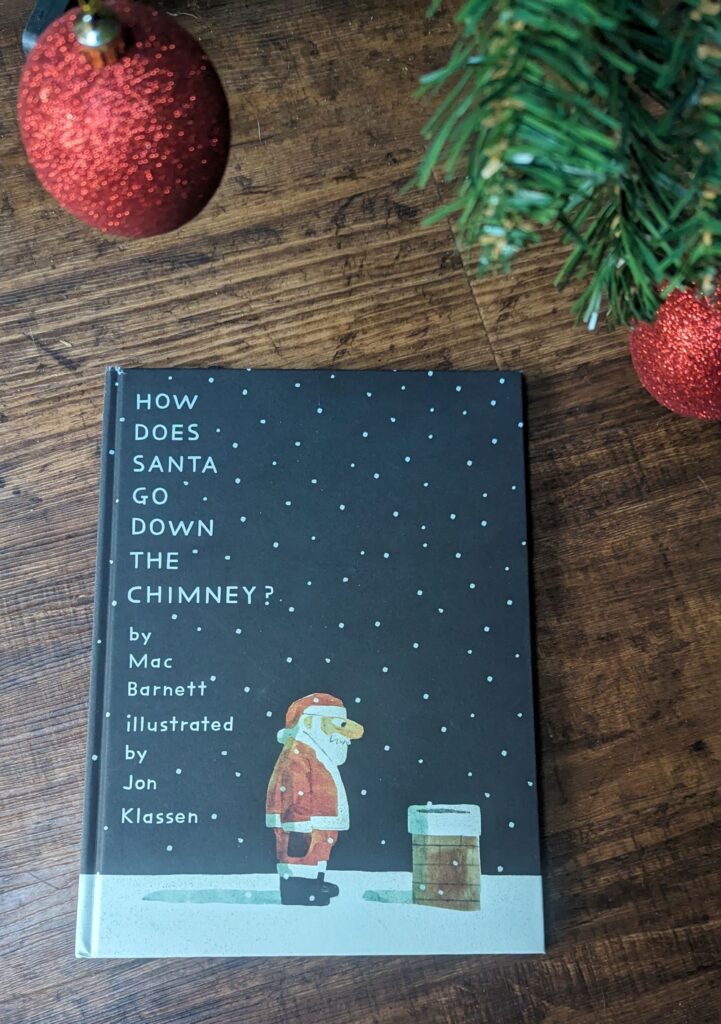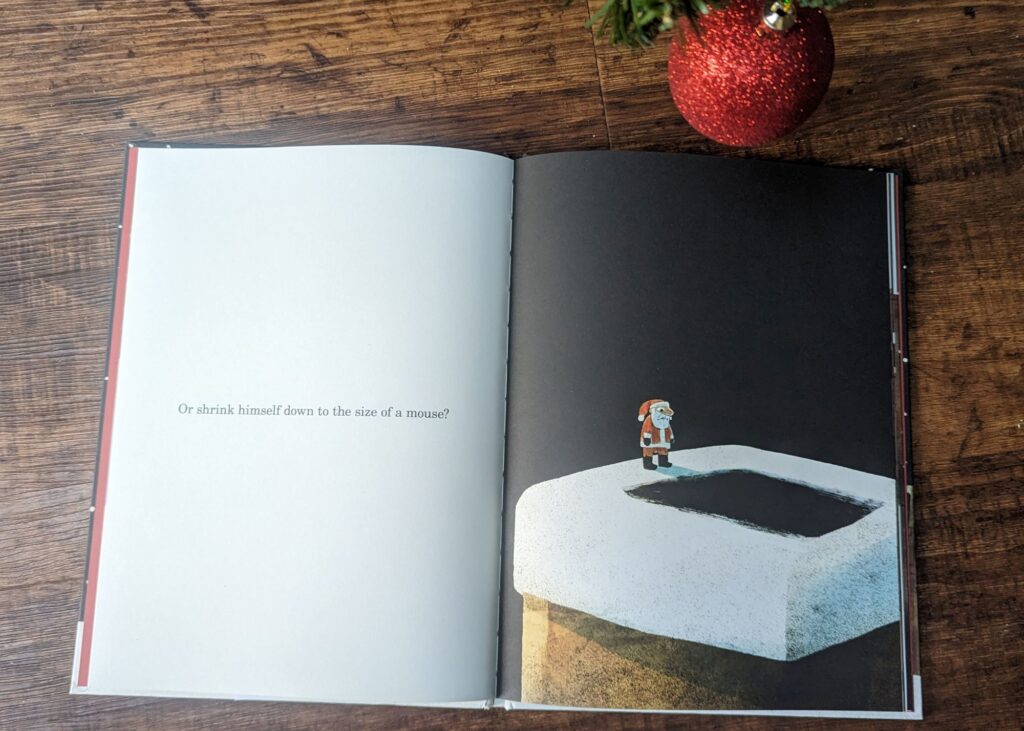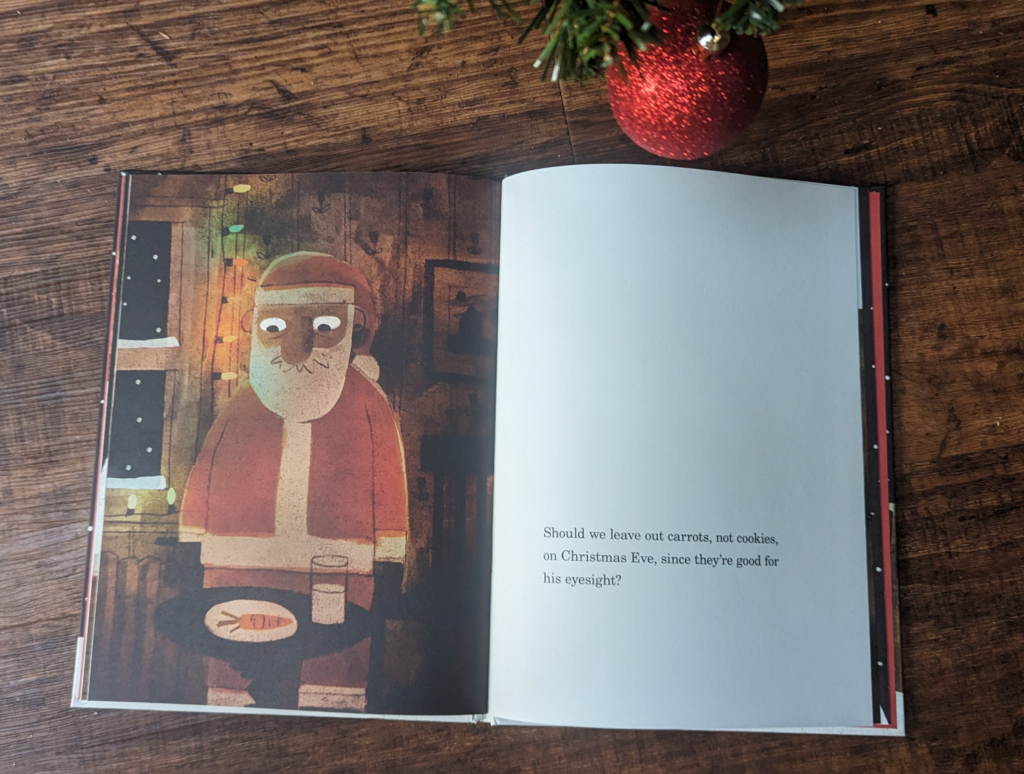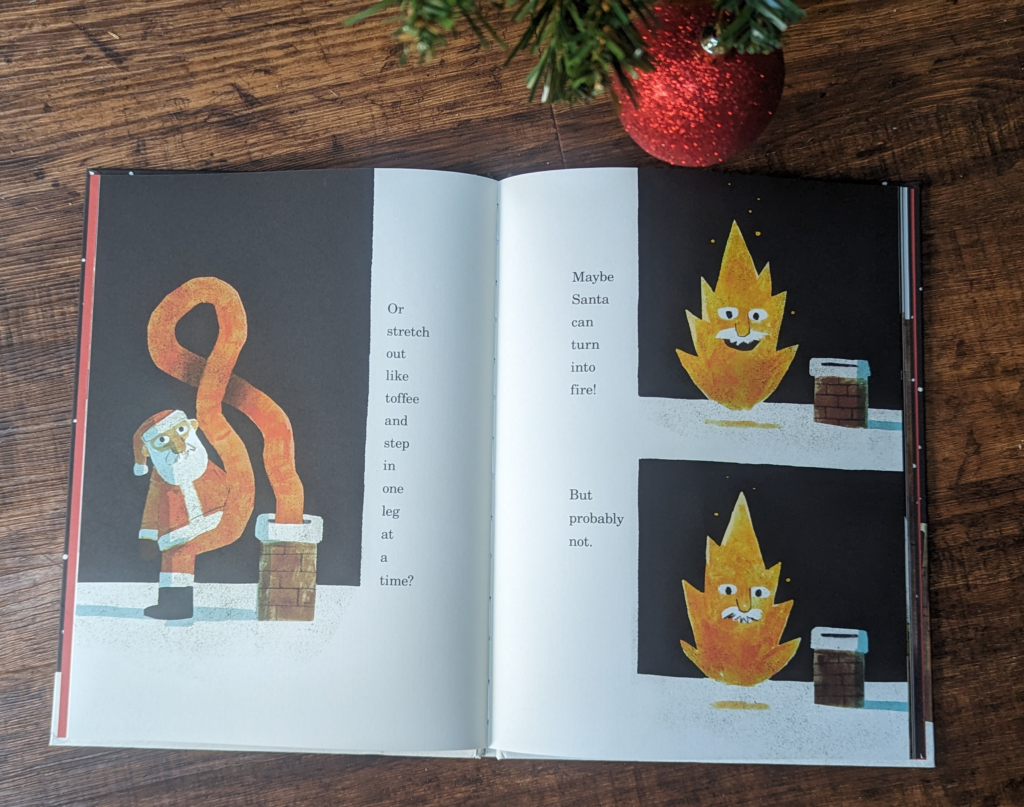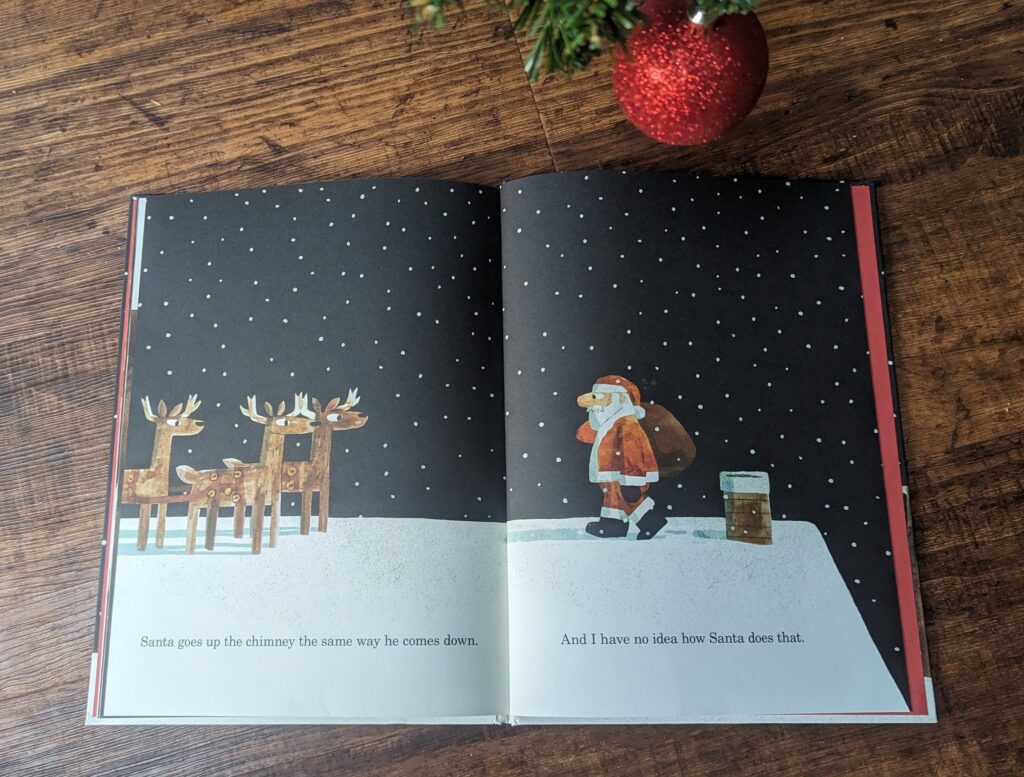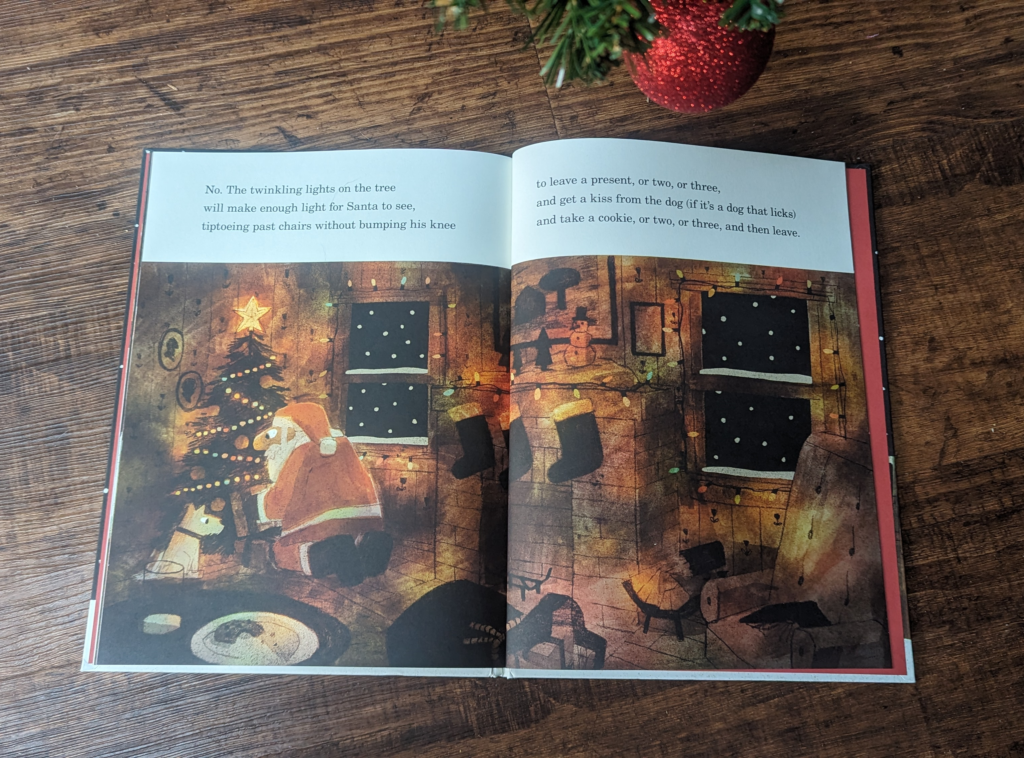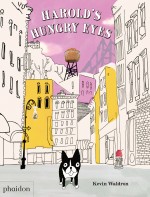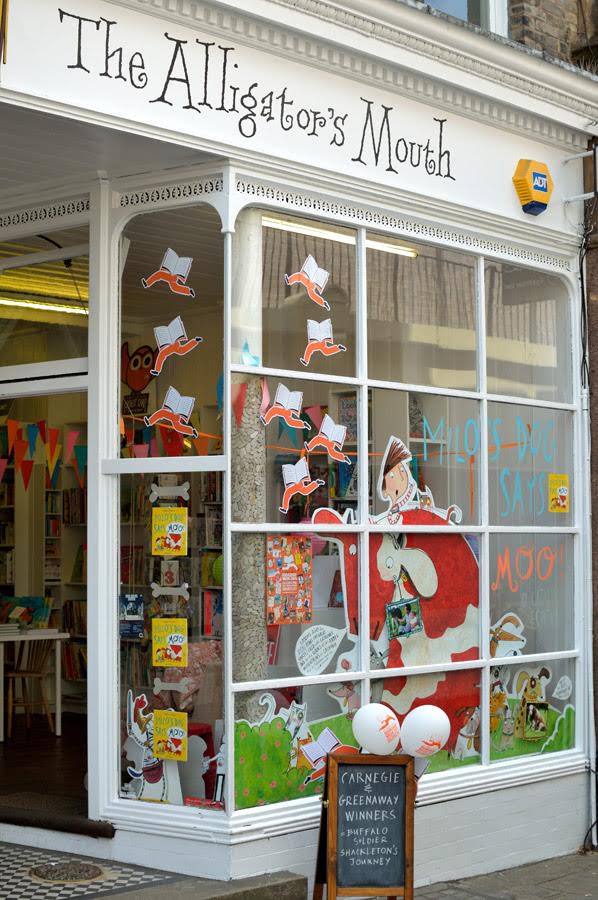If there is one Christmas picturebook to add to your collection this festive season, it is, without a doubt, How Does Santa Go Down the Chimney? by Mac Barnett and Jon Klassen (Walker Books). Full disclosure: you will not get any answers from this book, but the string of possibilities offered by super duo Barnett and Klassen will definitely not leave you disappointed. Their collaborations are always an absolute treat; Barnett’s wit and Klassen’s earnest characters and beautiful mix of graphite and ink bounce off each other so flawlessly. Together they have created the most wonderful deadpan tales and are without a doubt one of the most beloved contemporary collaborating duos working in picturebooks. One of the characteristics of their collaborative work is their subversive use of the page to support their equally subversive tales. An element of this is the unusual text placement in their books – think of the front and back covers of Sam and Dave Dig a Hole for instance – and this is also evident in How Does Santa Go Down the Chimney?
Traditional layouts when it comes to text placement would be considered to be the text placed on the verso (left) directly facing the artwork on the recto (right), or the text placed directly beneath the artwork. As a result, the text directly relates to the artwork, and when putting text under the artwork, precedence is given to the artwork. Postmodern picturebooks famously play with and work against these traditional conventions, and Klassen transgresses these rules regularly with his artwork; often the text is placed in a way that emphasises something specific in the corresponding artwork. The lack of linear narrative in the case of How Does Santa Go Down the Chimney? allows for more subversion when it comes to page layout. More than a story, the book provides a series of tableaux, each offering a possible solution to a child’s question on Father Christmas’ sneaking-in prowesses. The position of text on the page impacts the mood and tone of a story.
In the spread below for example (the only spread following the traditional recto-verso layout) the single sentence is directly opposite a much diminished Father Christmas. The illustration alone could communicate how tiny he is, but the overall page layout adds to this by creating a void; this could emulate the void, and therefore danger, of the inside of the chimney he is potentially about to jump in, and also, as a result, the dread related to that. It is also one of the few illustrations without snow, so the blackness of the night, mirrored in the blackness of the inside of the chimney, enhances this. The overall effect is of a palpable tension.
Later on in the book a very similar layout is used (flipped recto-verso layout aside). Here the reader’s eye is encouraged to zero in on the lone carrot on the plate, copying Father Christmas’s action. Klassen has a particular talent for saying so much about his characters’ feelings through their deceptively simple gaze. His feelings about carrots being good for him are plain to see there. The recto page emulates that, as well as possibly the emptiness in his stomach!
Now back to earlier on the book and to the roof, and the spread below uses a very unusually layout, with the artwork pushed to the edges of the double-spread while the text is in the middle, either side of the gutter, again with each sentence aligned left with only one word per line. This is such an effective way of emulating the narrow closed space of the chimney flue. The overall layout though is designed to create a comical situation, with the depictions of Santa adding to this.
Another layout that mimics the scene it portrays is the one below, a collection of illustrations set in a panel structure. Unlike a traditional panel structure, this sequence of panels are not subsequent in terms of time but rather a selection of encounters throughout the night. Rather than showing the passing of time, the structure is used to mirror the chaotic nature of Santa’s encounters with dogs. There is so much energy bursting out of this double-spread.
There are only four double-spreads in the book (one of those is the title page). In a narrative where layouts, and as a result pace, are varied, double-spreads help slow the pace by offering a pause. Two of which are full bleed on the roof scenes, but are constructed in a way where the gutter creates a latent split, separating the artwork in two, leaving Santa on the verso and the reindeer on the recto. This is also reinforced with the text placement and the fact that the characters are looking in opposite directions. In this spread, the pause offers a moment of drama, and the invisible separation of the gutter heightens this.
In the other similar spread, the structure is similar but Santa and the reindeer now face each other, and they are situated in the lower half of the double-spread this time. The darkness of the night sky is also lessened by the snowflakes. The dramatic tension has disappeared as a result, and as this is placed almost at the end of the book, it makes sense to show Santa in a more secure position, walking away from the chimney towards the safety of his herd.
The double-spread below , which precedes the one above, is probably the most “traditional” Christmas scene in the book, its warm colours and golden glow creating a reflective, quiet space reminding young readers of the magic of Christmas. While it still breaks tradition by having text above the artwork, this, in fact, reinforces that pause, and invitation to reflect. Because the reader will tend to look at the text first as we look at pages from top to bottom, it is almost as if the text is positioned there so you can read it, and then take all the time you need to peruse the artwork without the pressure of having to move on to the words. This layout invites a moment in stillness, so that young readers can bask in the magic that emulates from it.
There are so many examples of clever layouts and text placement in How Does Santa Go Down The Chimney? that I could have shown each and every page. However, I urge to pick up a copy and have a read yourself (and with your little ones of course). Despite its cheeky tone, this is a truly lovely Christmas book that keeps the mystery alive, with an ending that is absolutely in tone with what we expect of festive stories.
How Does Santa Go Down The Chimney? is available now to buy from all good bookshops or can be purchased via our partner bookshop, Storytellers, Inc.:
Review copy kindly provided by the publisher.
Research
Megan Dowd Lambert, “Picturebooks and page layout”, in The Routledge Companion to Picturebooks, edited by Bettina Kummerling-Meibauer (Routledge, 2017)
Denise I. Matulka, A Picture Book Primer: Understanding and Using Picture Books (Libraries Unlimited, 2008)
Slap Happy Larry, Picturebooks: Where to place words on the page https://www.slaphappylarry.com/picturebooks-where-to-place-words-on-the-page/

